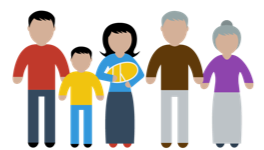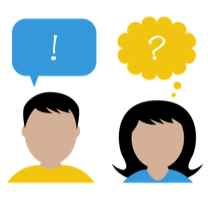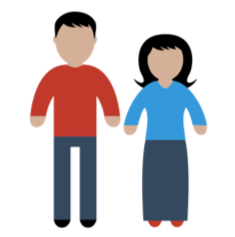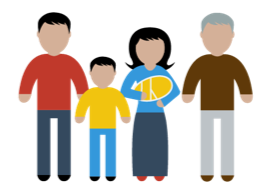The Auckland region is superdiverse with more than 200 ethnic groups settled in the region. In this resource, the term ‘Asian’ refers to the collective set of Asian ethnic groups, who although not homogeneous in nature, share certain value orientations, health beliefs and practices. These groups represent many diverse cultures, languages, religions, socio-economic status, education levels and migration experiences. Asian peoples in New Zealand come from countries in West Asia (Afghanistan and Nepal), South Asia (covering the Indian sub-continent), East Asia (covering China, North and South Korea, Taiwan, Hong Kong and Japan), and South East Asia (Singapore, Malaysia, the Philippines, Vietnam, Thailand, Myanmar, Laos and Kampuchea) (Mehta, 2012).
‘Asian’ groups include every category of immigrant: skilled migrants; refugees; those on temporary work visas, foreign fee-paying students on fixed term visas; and New Zealand-born Asians (third and fourth generation New Zealanders).
New Zealand-born Asians and 1.5 generation Asians (who were born overseas and relocated to New Zealand at a young age) are generally more acculturated to New Zealand culture, than newcomers. Within a family, the degree of acculturation may vary between the younger generation and the older generation or between those who have longer residence in New Zealand and those who are new arrivals.
Asian, Middle Eastern and African populations have much younger age structures than European populations, with relatively high proportions at the child and childbearing ages, and low proportions at the older ages (SNZ, 2015).
Annually, the New Zealand government accepts a UNHCR mandated refugee quota of 750 places. In 2018, this number will increase to 1000 quota refugees per annum. Refugees also arrive as asylum seekers and through the refugee family sponsored category. A quarter of refugee populations are under the age of 15 years (McLeod & Reeve, 2005). Rungan et al’s (2013) study of refugee children under five, arriving in New Zealand includes: children from: Myanmar (40%), Bhutan (10%), Afghanistan (8%), Congo (6%), Eritrea (4%); Colombia (13%) and Iraq (7%); with Sudan, Burundi, Sri Lanka, Iran, Indonesia, Palestine, Mauritius. Rwanda, Nepal, Somalia and Bangladesh each less representing less than 2% of children arriving from January 2007 to January 2012.
Asian people
The Asian population in the Auckland Region was over 402,000 in 2016 representing 23% of Auckland’s total population (SNZ, 2015). The most predominant Asian ethnicities in the region are Chinese (38.5%); Indian (34.6%), Korean (7.2%) and Filipino (7.0%) peoples. Close to a quarter of Asian peoples in the Auckland region have lived in New Zealand for less than 5 years (Walker, 2014).
Asian peoples in New Zealand come from: South Asia: India, Sri Lanka, Nepal, Pakistan, Bangladesh, Afghanistan, Bhutan, the Maldives and Fijian Indians. East Asians include people who have migrated from China, Japan, Taiwan, Mongolia, South Korea, North Korea and Macau. South East Asians include people from Vietnam, Cambodia, Malaysia, Singapore, Indonesia, Thailand, Philippines, Burma, Brunei, East Timor, and Laos (Mehta, 2012).
Middle Eastern and African people
Middle Eastern and African (MEA) populations consist of extremely diverse groups with dissimilar cultures, religions and backgrounds. In 2013, 2% (44, 259) of the New Zealand population identified as Middle Eastern, Latin American and African (MELAA) and half lived in the Auckland region (Walker, 2014).
Middle Eastern people
Middle Eastern people are the largest of the MELAA groups in Auckland. Middle Eastern peoples in New Zealand come from: Algeria, Egypt, Iran, Iraq, Israel, Jordan, Lebanon, Libya, Morocco, Oman, Palestine, Syria, Tunisia, Turkey, Yemen, Kuwait, the United Arab Emirates, Turkey, Saudi Arabia and Bahrain.
Since 1994, refugees from Iran and Iraq have formed a large proportion of New Zealand’s refugee intake and overall these groups make up the largest Middle Eastern populations (Perumal, 2011). These ethnic groups represent many diverse languages, religions and ethnic affiliations.
African people
African people are the second largest MELAA group in Auckland. Similar to Middle Eastern people, many came to New Zealand as refugees from the late 1980s (predominantly from the Horn of Africa). By the early 2000s, the majority came as migrants from South Africa and Zimbabwe (Perumal, 2011).
African peoples in New Zealand are from: Jamaica, Kenya, Nigeria, the USA, Uganda, The Caribbean, Somalia, Eritrea, Ethiopia, Ghana, South Africa, Zimbabwe, Democratic Republic of Congo, Republic of Congo, Tanzania, Rwanda, Burundi, Nigeria, Sierra Leone, Djibouti and Sudan. African peoples come from diverse cultural and religious backgrounds and ethnic affiliations.

 Migrant children and young people are at risk of mental health problems. The migration process causes stress, not only because migration entails extensive loss of family and friends, culture and community, but also because migrants have to adapt to a new cultural environment, often including different social norms, values and standards and a new language (Berry, 1990). The New Zealand Youth 2007 study found that mental health issues were a significant concern among Asian youth, especially among female students (Parackal, Ameratunga, Tin Tin, Wong & Denny, 2011).
Migrant children and young people are at risk of mental health problems. The migration process causes stress, not only because migration entails extensive loss of family and friends, culture and community, but also because migrants have to adapt to a new cultural environment, often including different social norms, values and standards and a new language (Berry, 1990). The New Zealand Youth 2007 study found that mental health issues were a significant concern among Asian youth, especially among female students (Parackal, Ameratunga, Tin Tin, Wong & Denny, 2011). Many Asian, Middle Eastern and African gestures and greetings differ significantly from Western ones. To develop good rapport and show respect, here are some essentials for greetings and communication.
Many Asian, Middle Eastern and African gestures and greetings differ significantly from Western ones. To develop good rapport and show respect, here are some essentials for greetings and communication. In this section, additional information about Asian/MEA traditional family structures, family-based decision-making, gender roles, parenting, intergenerational and other cultural expectations are provided. The suggested cultural approaches or considerations are included to expand health providers’ cultural understanding and to enhance engagement with families.
In this section, additional information about Asian/MEA traditional family structures, family-based decision-making, gender roles, parenting, intergenerational and other cultural expectations are provided. The suggested cultural approaches or considerations are included to expand health providers’ cultural understanding and to enhance engagement with families. The father or the husband is usually the decision-maker for bigger family issues. However, mothers are usually the main caregivers of the children and older persons.
The father or the husband is usually the decision-maker for bigger family issues. However, mothers are usually the main caregivers of the children and older persons. The roles of Asian/MEA men and women are distinct. Women manage the home by keeping all finances, family, and social issues in order. Women are more passive and men typically are the bread-winners and managers of issues requiring interaction with individuals in the community, eg health care. This type of behaviour implies that men have a dominant and authoritative role because they are the primary point of contact with society. However these roles are beginning to change among educated Asian/MEA families and among immigrants in progressive or permissive societies.
The roles of Asian/MEA men and women are distinct. Women manage the home by keeping all finances, family, and social issues in order. Women are more passive and men typically are the bread-winners and managers of issues requiring interaction with individuals in the community, eg health care. This type of behaviour implies that men have a dominant and authoritative role because they are the primary point of contact with society. However these roles are beginning to change among educated Asian/MEA families and among immigrants in progressive or permissive societies. In many Asian/MEA cultures, parents expect their children to be obedient, well-disciplined and to achieve high academic qualifications. Asian parents employ a “training” mode of upbringing, organizing children to attend different tutorials or interest groups, even after school and during holidays.
In many Asian/MEA cultures, parents expect their children to be obedient, well-disciplined and to achieve high academic qualifications. Asian parents employ a “training” mode of upbringing, organizing children to attend different tutorials or interest groups, even after school and during holidays.